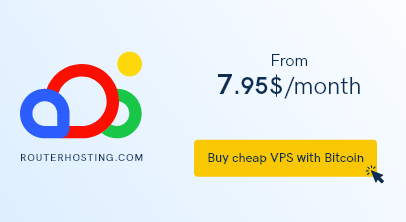If you’ve got a great idea for an eCommerce website, but you’re not sure how to make it happen. Here are the 10 elements you need to understand before start hiring an eCommerce web designer!

Header
The header is the first thing that your visitors will see, so it’s important to get this right. The header should include:
- Your brand name and tagline, which are usually placed above the logo
- A search bar, which ensures that people can easily find what they’re looking for
- Navigation menu items (you probably have enough room for more than one), including links to popular content
Navigation
Navigation is one of the most important components of your user experience, and it’s something that you should be taken seriously. Navigation helps users find what they are looking for quickly and easily, so it’s important to make sure that your navigation is easy to use and stays consistent across all pages.
You should also think about creating multiple navigation options for different types of users. For example, if you have a lot of products on your site, you may want to create a menu bar with links organized by category or brand—this way people can easily navigate through all the products they’re interested in seeing without having to scroll through every page individually.
Search Bar
While it might seem like a simple, almost invisible element of your website, the search bar is an important part of your eCommerce store. If your customers can’t find it or if they don’t know how to use it, they may leave your site in frustration.
To make sure that doesn’t happen:
- Make sure the search bar is easy to find and easy for customers to use. The best way to do this is by making sure the label for the search bar matches up with what people are looking for (e.g., “Search”). You can also give people some idea of what results will be displayed when they type something into your search box—it could be as simple as showing them categories or products that have been clicked on recently or searched for most often—so that visitors can see immediately whether those options are likely going to be helpful (and therefore worth clicking). Finally, keep things clear and simple with good design choices like dark text on white backgrounds or icons instead of words where possible; these will make scanning easier while also avoiding confusion about where exactly you need to click/tap next!
Filtering and Sort Options
Filtering and sorting are two very important options that must be included in your eCommerce website. Filtering allows your customers to narrow down their search results by choosing specific criteria, such as price or brand. Sorting helps them organize these results into the order of importance, which they can then use to make decisions about what they want to buy.
Here are some examples of filtering and sorting options that you can use on your site:
- Price range: This option is great for customers who want to shop within a certain budget, so they can find the best deals possible.
- Brand/manufacturer: This option is good for those who already have an idea about what brand or manufacturer they want to buy from, but don’t know where exactly it’s available online yet!
- Color/materials used in construction (make sure this one includes several options): If you sell clothing items like t-shirts or dresses with different colors available for each style – offer those choices here too!
Responsive Design
Responsive design is the practice of designing a website to respond (change) to different screen sizes and resolutions. This is important because as users browse eCommerce websites on their mobile devices, they want their experience to be seamless and not interrupted. The best way to achieve this is through responsive design!
A popular example of a responsive eCommerce site would be Amazon — you can see that the design changes depending on what device you’re using.
Call to Action on All Pages
A call to action (CTA) is a part of a web page that prompts users to take immediate action.
The purpose of using a CTA is to drive more conversions on your website.
Examples of CTAs can be “Subscribe Now,” “Add To Cart,” or “Learn More.”
Product Pages
- Product Description
- Product Images
- Product Features
- Related Products
The product page is where you’ll be able to do most of your selling. The main elements that should be present on every eCommerce website are: a photo of the product, an overview of what it is and what it can do for people who buy it, and a “buy now” button.
Checkout Process
Checkout can be the most difficult part of your eCommerce site to design. It’s a place where users need to enter their credit card information, but it also needs to be easy and fun so that people will want to come back and buy more things.
To make sure that you’re providing the best experience possible, here are some tips:
- Make it easy. Your checkout process should be simple, clear, and concise. If something looks complicated or confusing, it probably is! Keep these things in mind when designing your checkout process:
- Clear instructions with no jargon
- Clear pricing information packages/discounts/shipping costs etc…
- Easy-to-use payment methods (e.g., PayPal)
- Easy-to-navigate payment options such as gift cards/promotions
Shopping Cart
The shopping cart is the place where customers put the items they want to purchase. The design of this element should be treated with care since it’s a crucial part of your e-commerce website.
When designing your shopping cart, make it easy for customers to navigate through their shopping experience and add multiple items at once. When you’re ready to checkout, the easiest way to do so would be by adding all of those items into one single purchase or transaction. Once you have everything saved in your cart, then proceed with checking out and paying for them all at once!
About Us Page
The About Us page is one of the most important pages on your website. It’s an opportunity to tell new visitors everything they need to know about you and your business, in a way that sets you apart from the competition.
It’s also one of the most neglected pages on e-commerce websites. Many retailers simply copy and paste their company bio from their corporate website with little else added in, which can be a mistake as it doesn’t allow you to stand out from other similar stores online.
You’re About Us page should:
- Include photos or videos of your team members working together
- Tell customers who works there (or how many people work for you) – including what skillsets each person brings to the business
- Highlight awards won or recognitions received by your company (or individual employees)
These web components can help you have a successful eCommerce website
There are 10 essential components that you need to consider when designing an eCommerce website. These elements will help you have a successful website and can also help your business grow.
- Well-designed product pages: The first step in creating a good eCommerce site is making sure that all of your products have well-designed product pages. You want customers to be able to easily find what they’re looking for, understand exactly how much everything costs, and know exactly what kind of experience they will be getting when they purchase from you. If users cannot find what they want on your site then they will not buy from it! It should also be easy for them to compare different products so that way if there are two similar items but one costs more than the other – maybe because it has better reviews or something similar – then users can easily see which one offers them more value instead of just relying on price alone as their only deciding factor (which isn’t always possible since sometimes there is no difference between two similar products).
- User Reviews/Ratings: Users need some kind of feedback from other people before making any decisions about whether or not something works well enough for their needs.”
Conclusion
These are the 10 essential web components you need when designing an eCommerce website. You can’t just design a website and expect it to be successful. You need to take into consideration all of these elements including the hosting provider so that your users will have a great experience and want to come back again and again!

